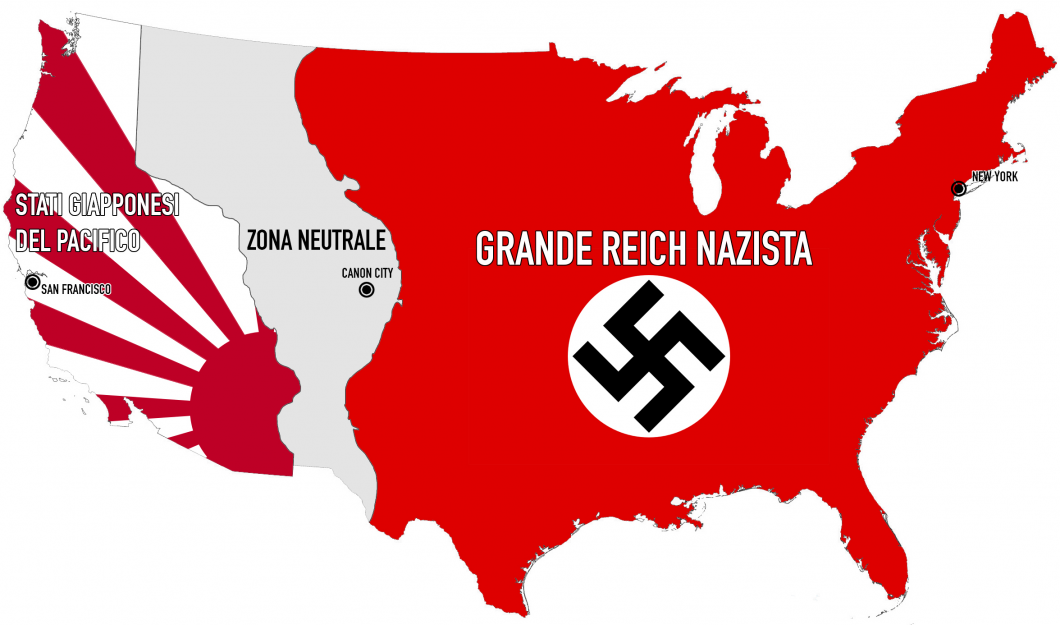Fundamentally Transformed
Usually when we decide that a sci-fi author has become “fashionable” again, we only mean that filmmakers have grabbed the idea behind his or her stories and run with it. The movie Blade Runner (1982) used only the bare bones of a 1968 Philip K. Dick story (Do Androids Dream of Electric Sheep): that of a futuristic detective who hunts robots—robots that are human in every respect save emotional responses. From there, director Ridley Scott drenched the story in noir, and shaped what essentially was a chase movie around the question of what makes one human. Steven Spielberg’s Minority Report (2002) used the simple premise of Dick’s short story by that name—cops arresting people who had merely thought of committing a crime—and expanded it into a search for a killer by a government that oversaw an otherwise crime-free environment.
Now we have Amazon Prime’s highly popular adaptation of Dick’s Hugo Award-winning novel, The Man In the High Castle. One would think this meaty 1962 novel a candidate for a reasonably faithful adaptation. To write it, Dick used the by-then literary cliché of what the world would have been like had Imperial Japan and Nazi Germany won World War II and occupied and carved up America. The crux of it concerned a samizdat-type novel written by “the man in the high castle” that posited a different outcome of the conflict, a victory by the Allies. It was essentially a quest story, with the object being the novelist, ensconced in his supposedly impregnable base in the buffer area of the Colorado Rockies. American subversives who refused to accept rule by the Axis powers raced to get to the man before the Nazis got there to silence him.
Along the way, Dick made political points, in which the Japanese came off better than their fascist partners. (The Nazis exuded such a palpable sense of evil that it made a closeted dove in the Japanese government bolt from the room and vomit.) In this counterfactual world, Africans had been reduced to ash, and the Nazis oversaw a “Vichy-type” government in the American South whose policy was exterminating American blacks. Jews captured in the Nazi zone were eerily absent, while the Jews who had been “lucky” enough to be captured by the Japanese kept their identities secret for fear of being extradited to the Reich.
The television series, brought to the small screen by the writer-producer Frank Spotnitz, in fact improves markedly on the source material. Gone is the Jungian, 1960s-ish emphasis on the I-Ching; that ancient Chinese text, without giving away too much plot, was used by Dick as a deus ex machina. The quest for “the man in the high castle” is here, but now he is the maker of a newsreel showing an Allied victory rather than the author of a book. Where the series has gone further than Dick is in extrapolating what a fascist America would look and be like. And it’s done without creating the impression of stretching the original material to get to 10 episodes (unlike American Horror Story, which began in 2011, and which, to meet a 12-episode-per-season quota, strains credibility by bringing the dead back to life).
A signal achievement of the series is in its grafting of what we know about America circa 1962 onto an extremely chilling fascist version. It shows postwar commuters into Manhattan from the lawn-sprinkled suburbia of Long Island, but not as “men in grey flannel suits” locked in capitalism’s rat race. Instead they are black-clad SS officers who celebrate their own Fourth of July—the day of the U.S. surrender—by tossing a baseball with their Hitler Youth sons at backyard cookouts. Out come the flags, which have retained their stripes but have had their stars replaced with swastikas. Mothers lubricate their housewifely drudgery with “little helpers”—barbiturates rather than martinis. The demands, and the need to cope with them, are more stressful than anything Bettye Friedan complained about: they must make a perfect home for their Aryan husbands and babies for the Nazi war machine.
The series is sure to offend politically correct sensibilities. The Greatest Generation is celebrated by liberals for defeating Germany, not so much Japan; because of U.S. involvement in Vietnam, the Allied combatants’ hatred toward their Japanese adversaries is considered racist. To be sure, Americans expressed their view of the Land of the Rising Sun quite viciously. The Japanese were said to be runts with animal characteristics (particularly well-suited to Pacific jungles). Their no-surrender form of warfare made them seem not just inhumane to the Americans, but inhuman.
The historical record in fact shows a brutal empire whose warriors bayoneted babies (Chinese ones in Shanghai) and starved, beat, and beheaded American captives. And indeed the Japanese occupiers in the series come off worse in some respects than the German ones. In only one instance are the Nazis’ concentration camps mentioned. The filmmakers seem to assume a great deal of knowledge on the part of viewers about Nazi horrors, and thus place them in typical American settings for shock value.
But they show Japanese actually committing atrocities. Imperial Japan gasses women and children (using a new and improved version of Zyklon B, called Cyclone D), not in specially-built camps, but in plush waiting rooms. The pits filled with decaying corpses are made by Japanese execution squads.
Filmed in grainy, washed out colors, the series is a nightmare version of the Cold War. Doves are murdered by hardline forces; children, as in Stalinist Russia, turn in adults; and no one can be trusted. Season 1 ends on an eerie note, which leaves the need for a Season 2.
This may be the finest extrapolation of a Philip K. Dick novel to date.
